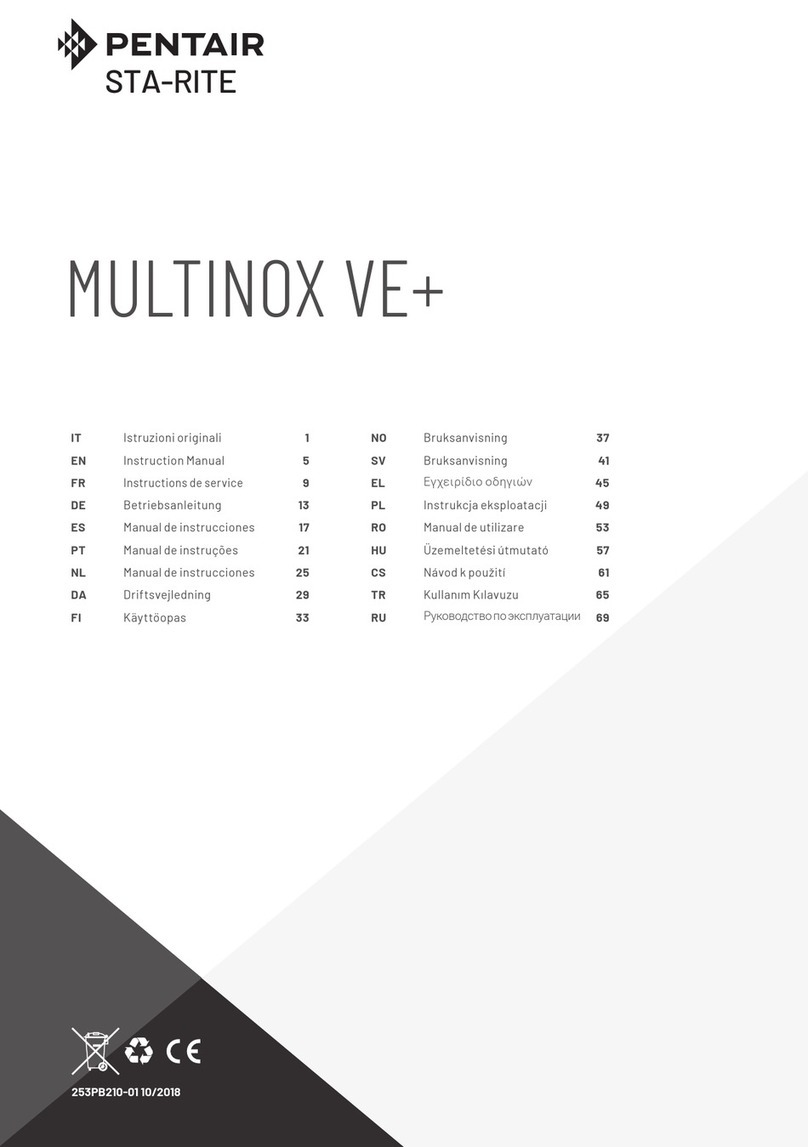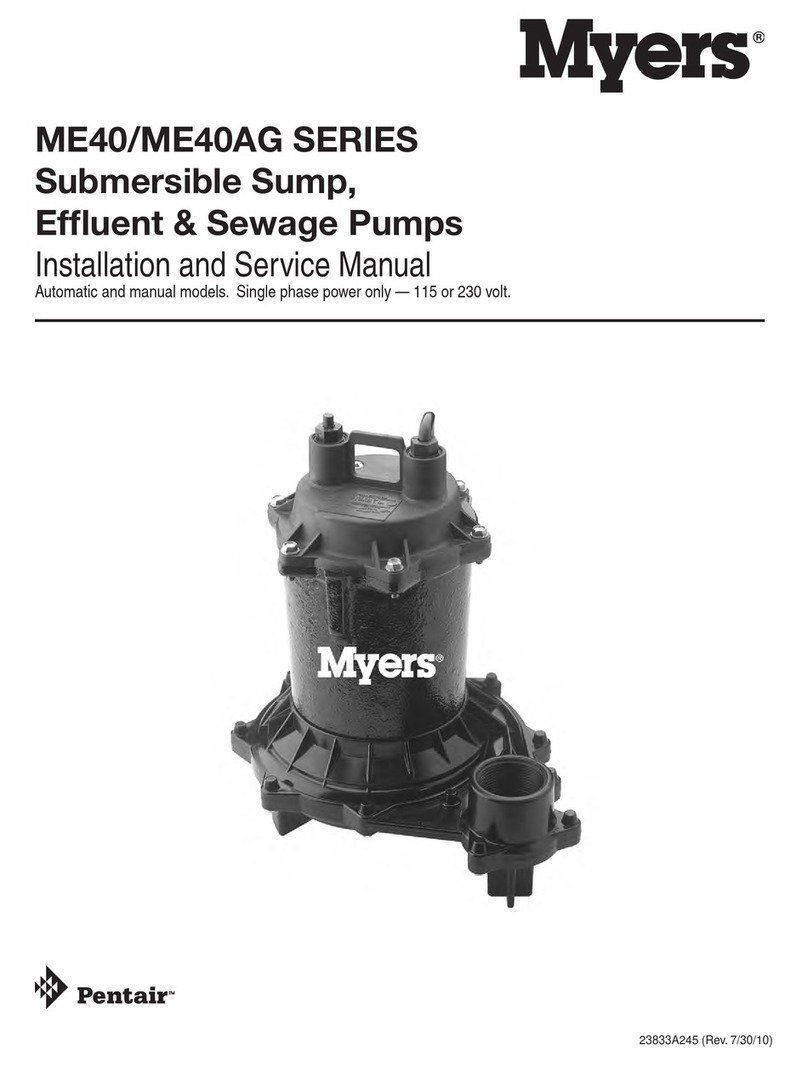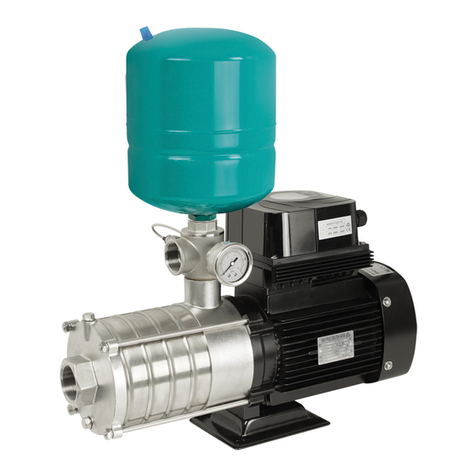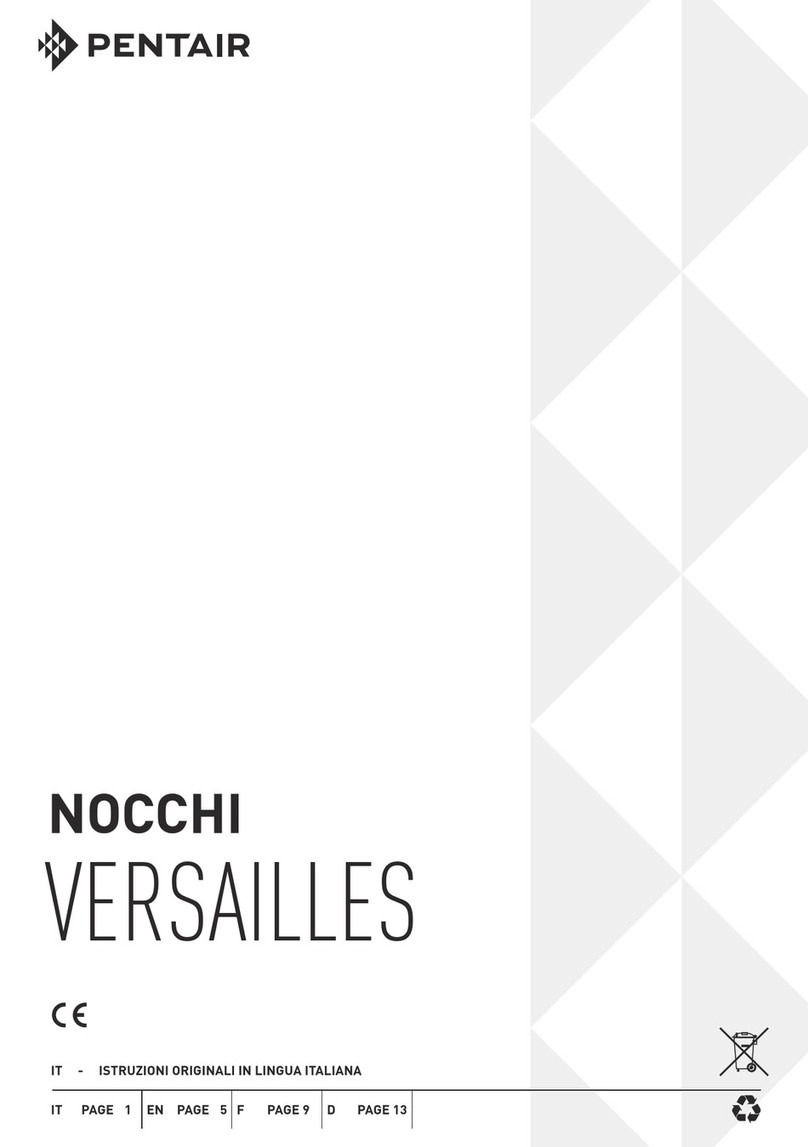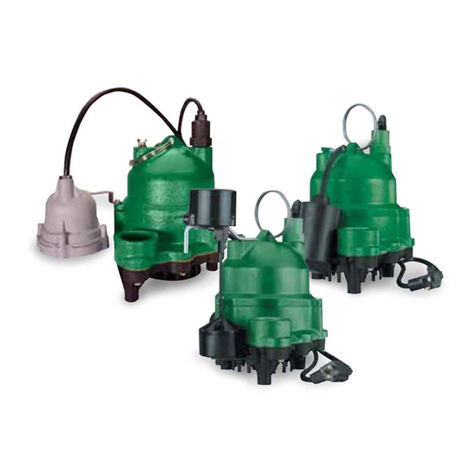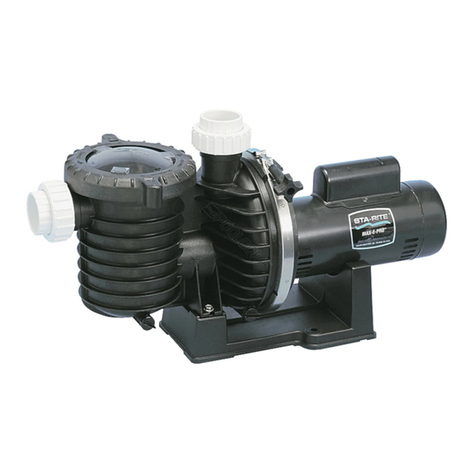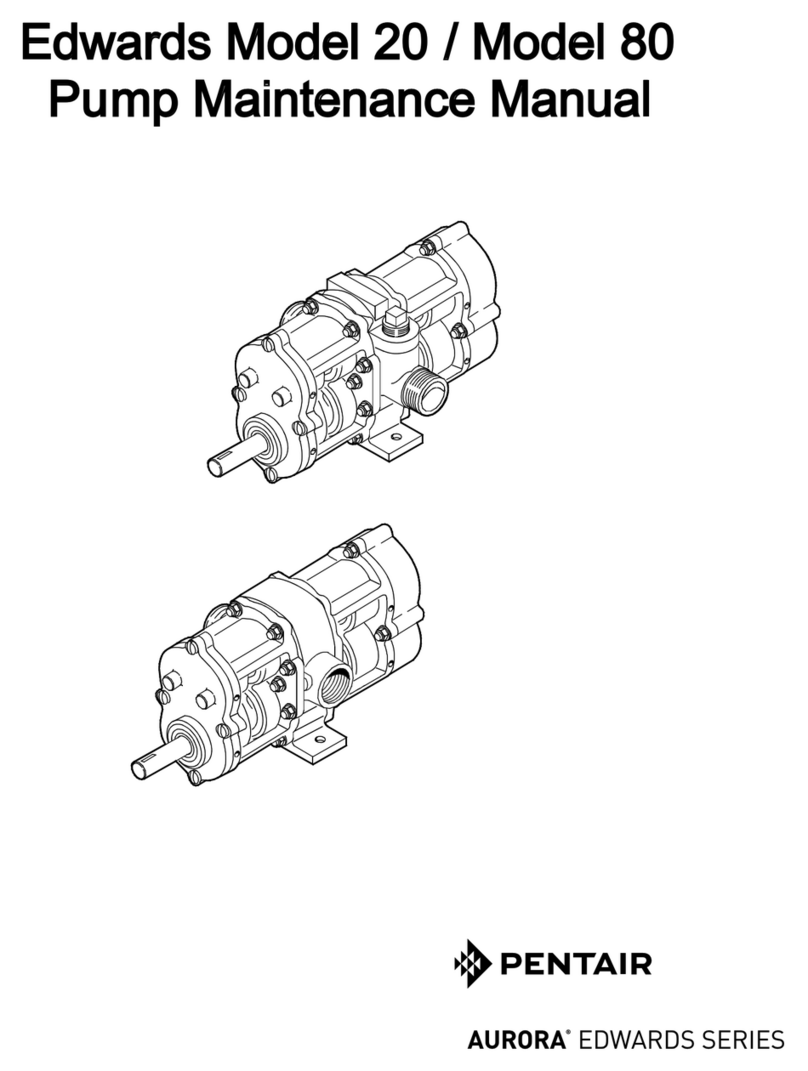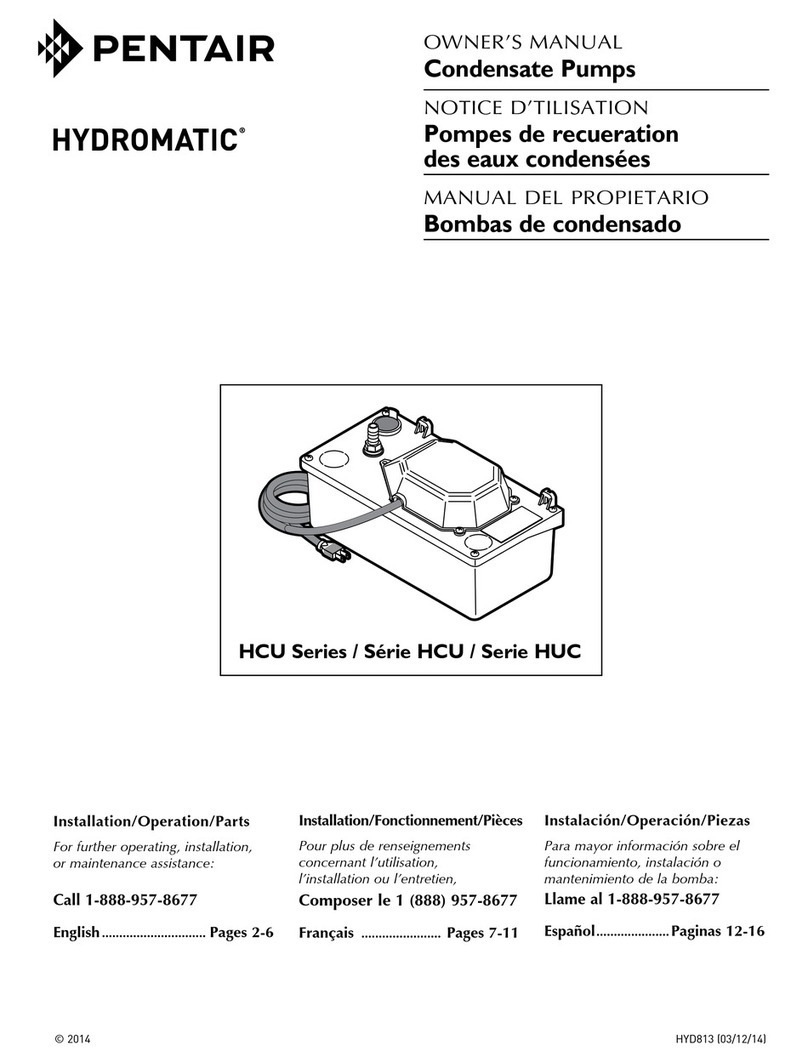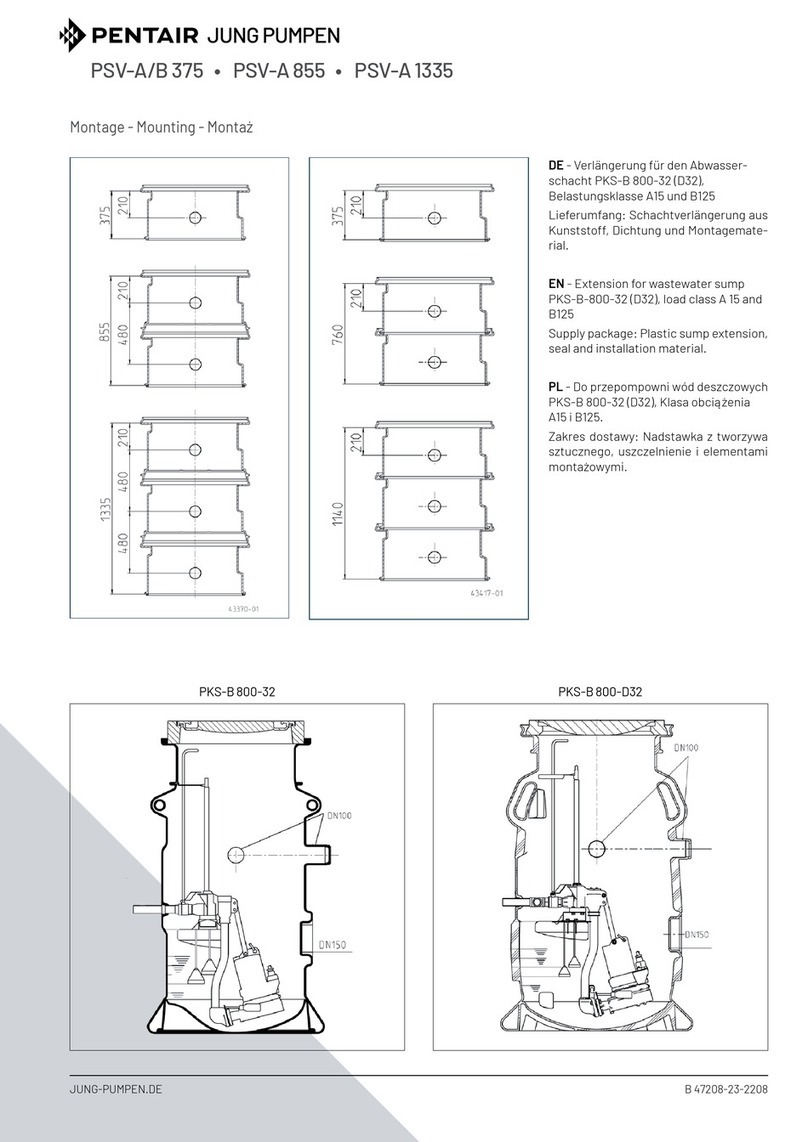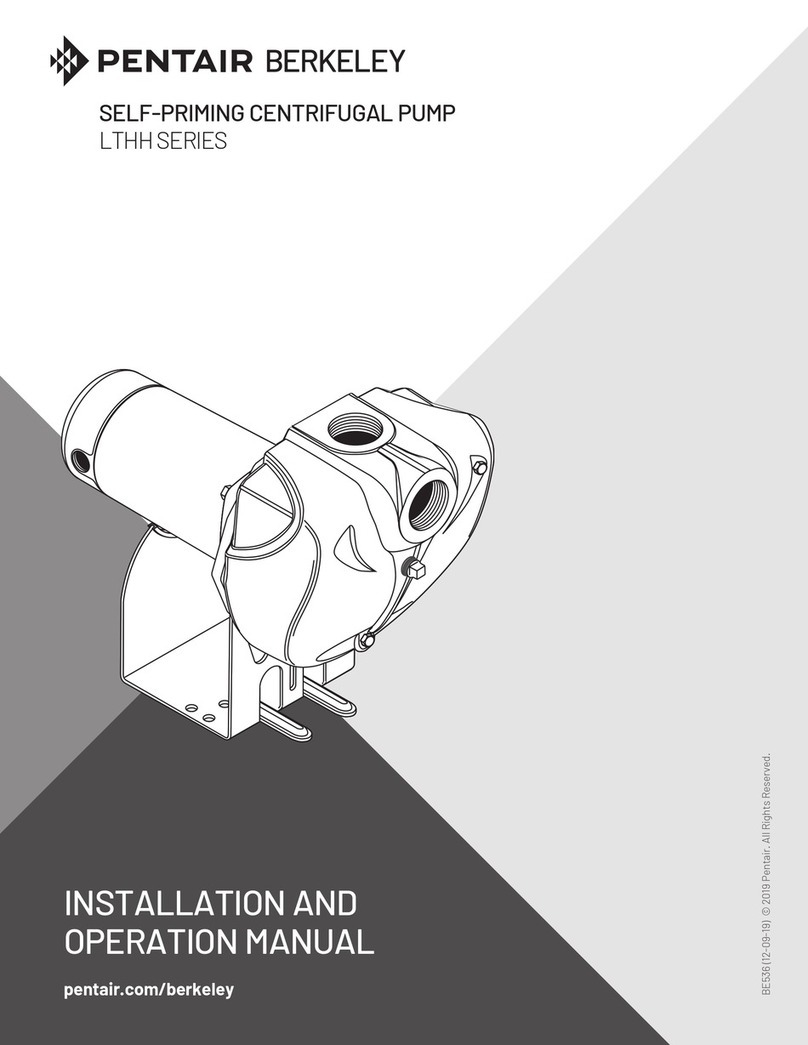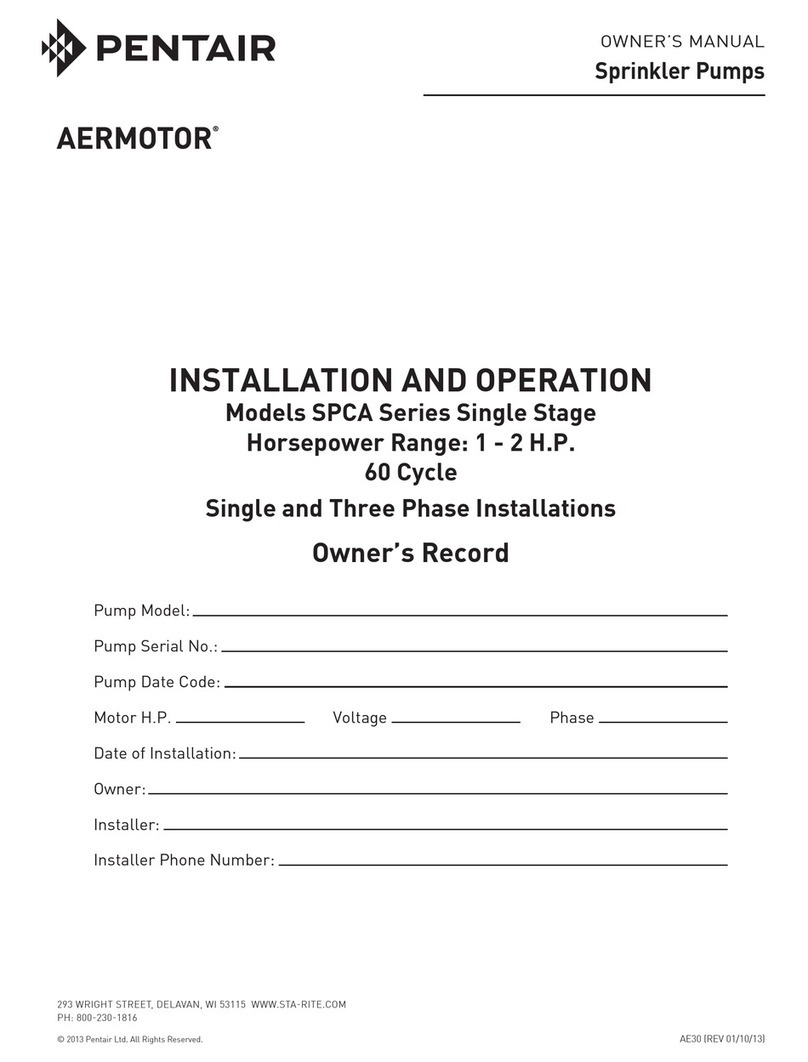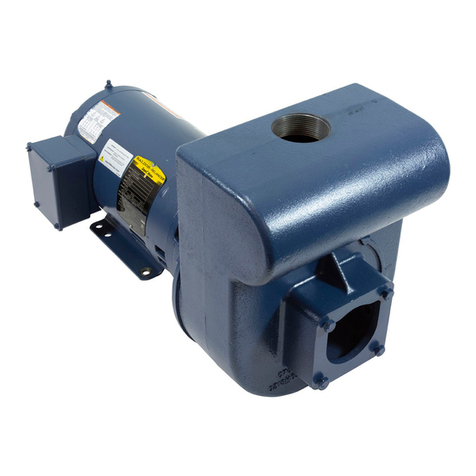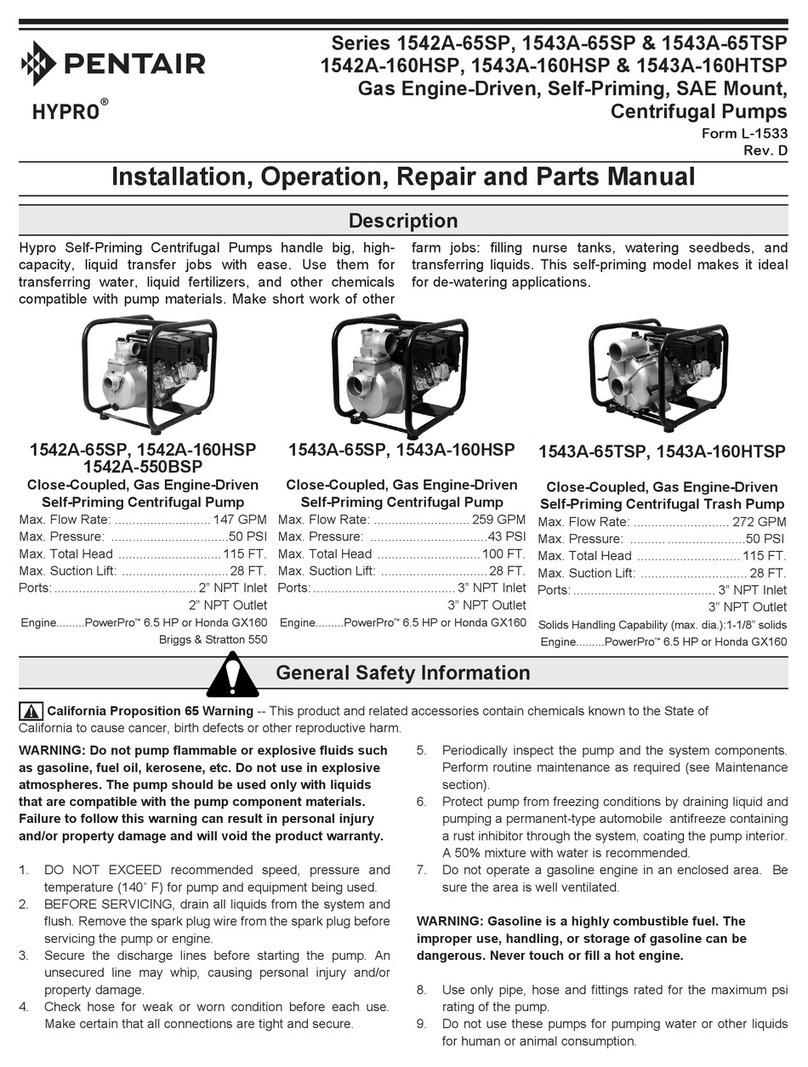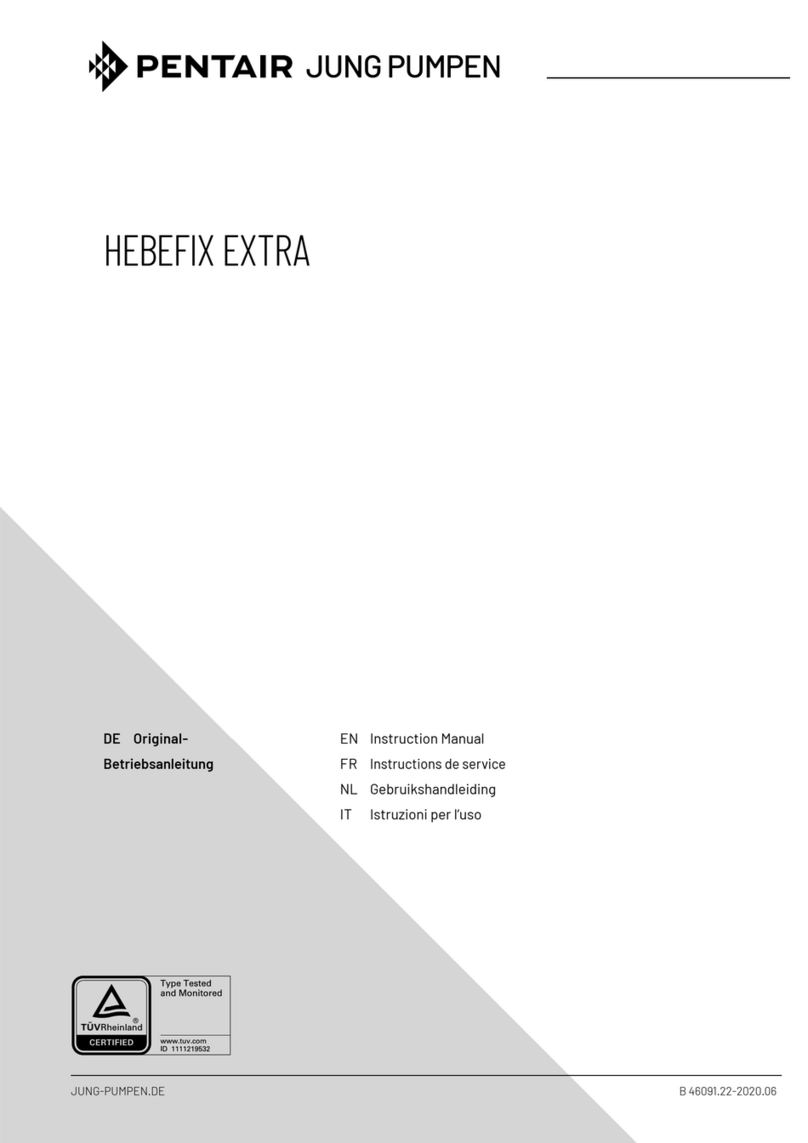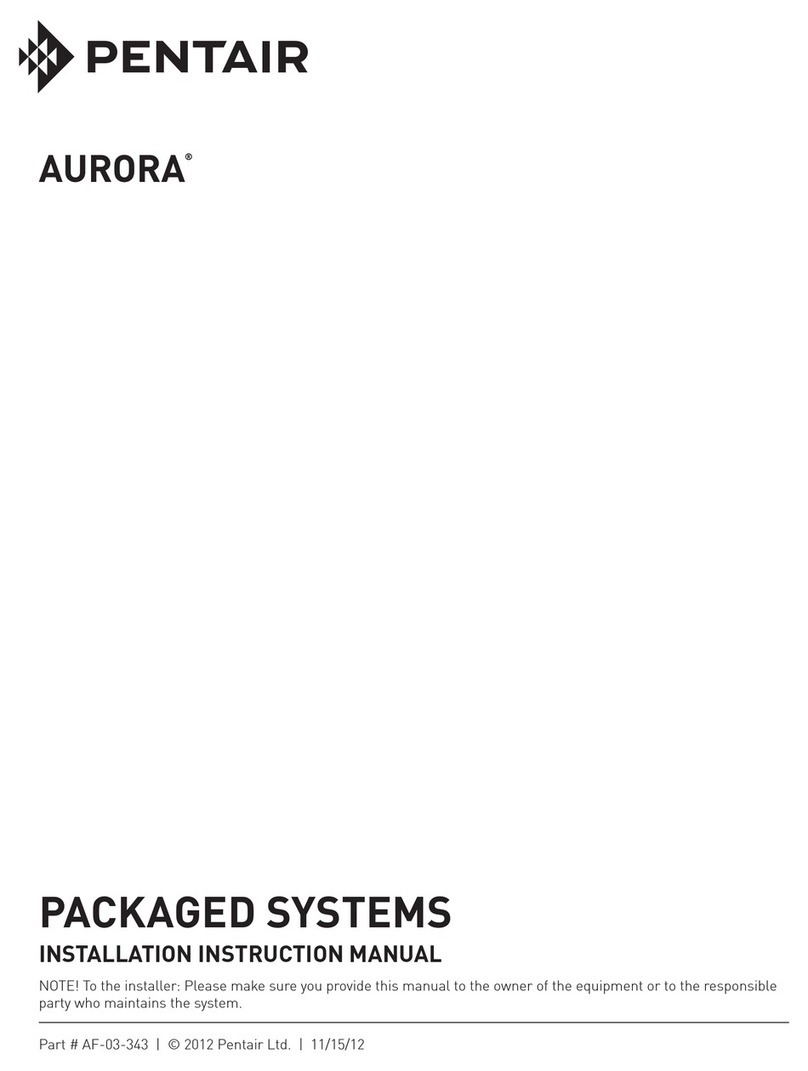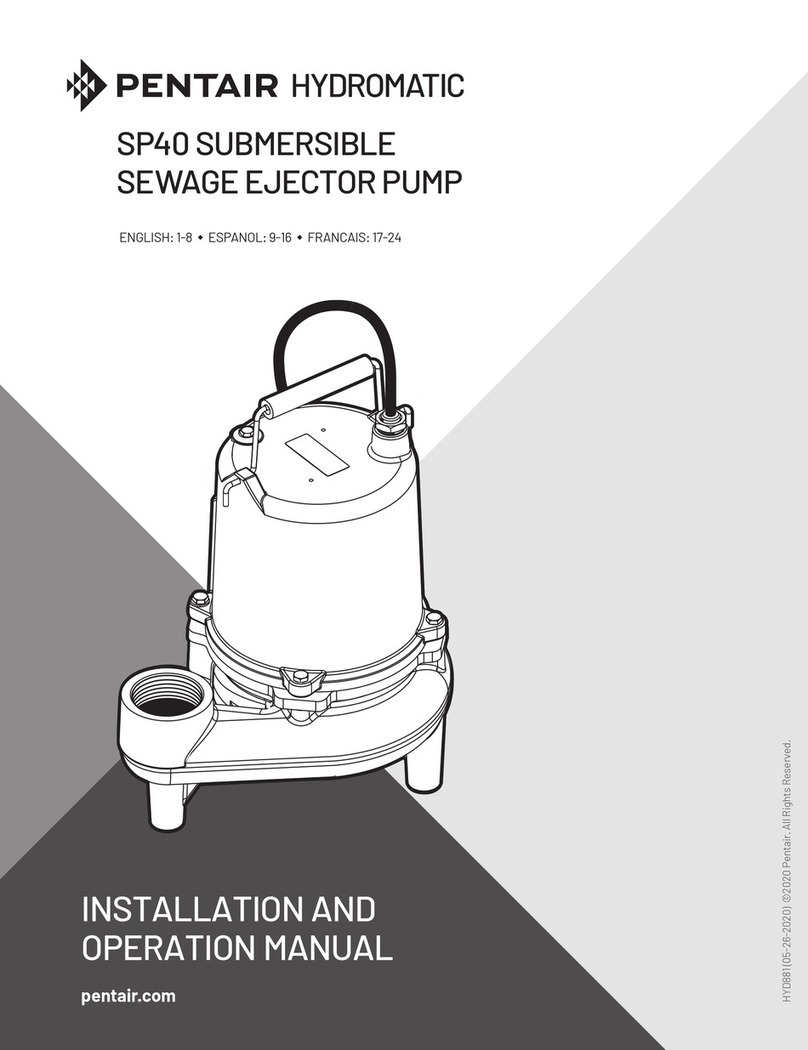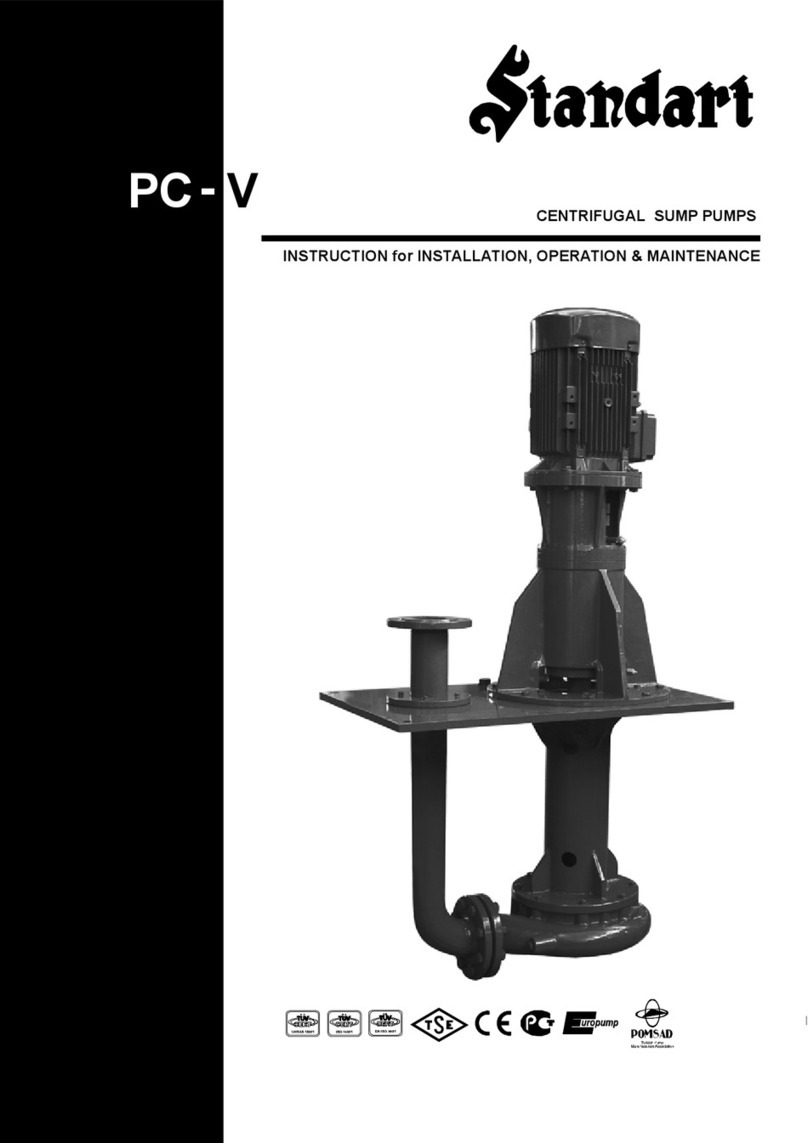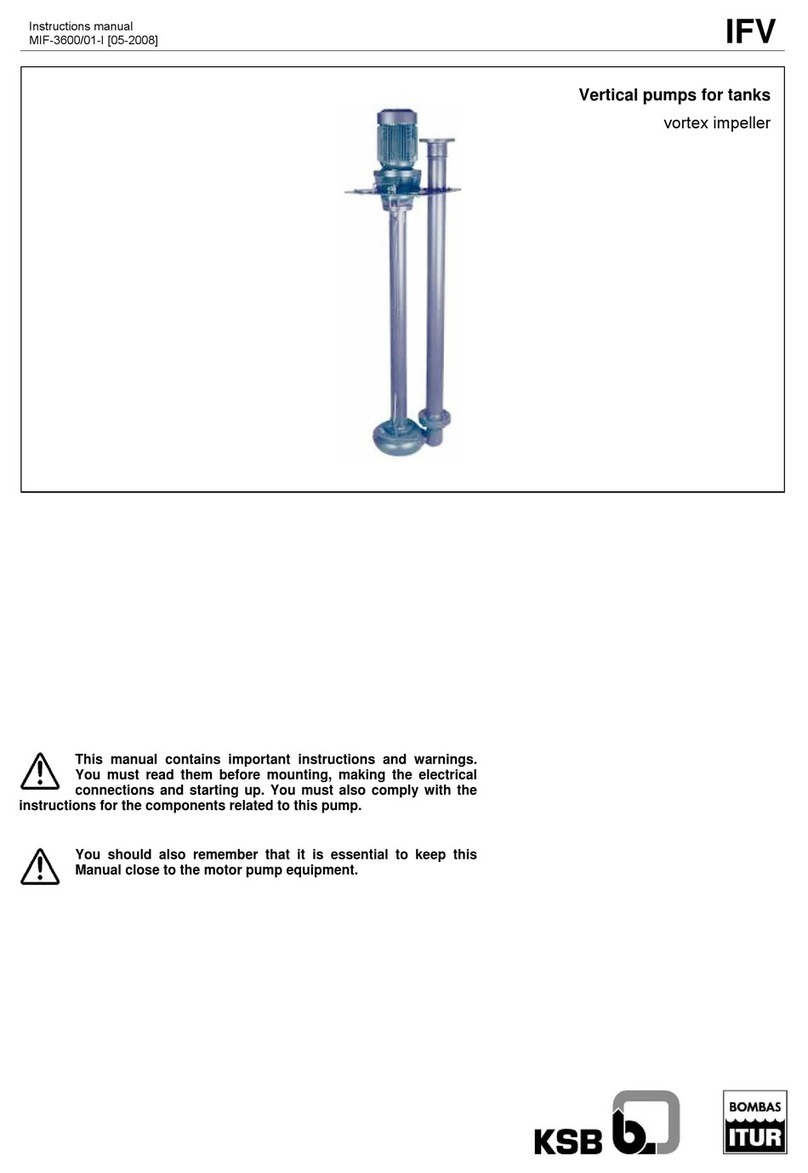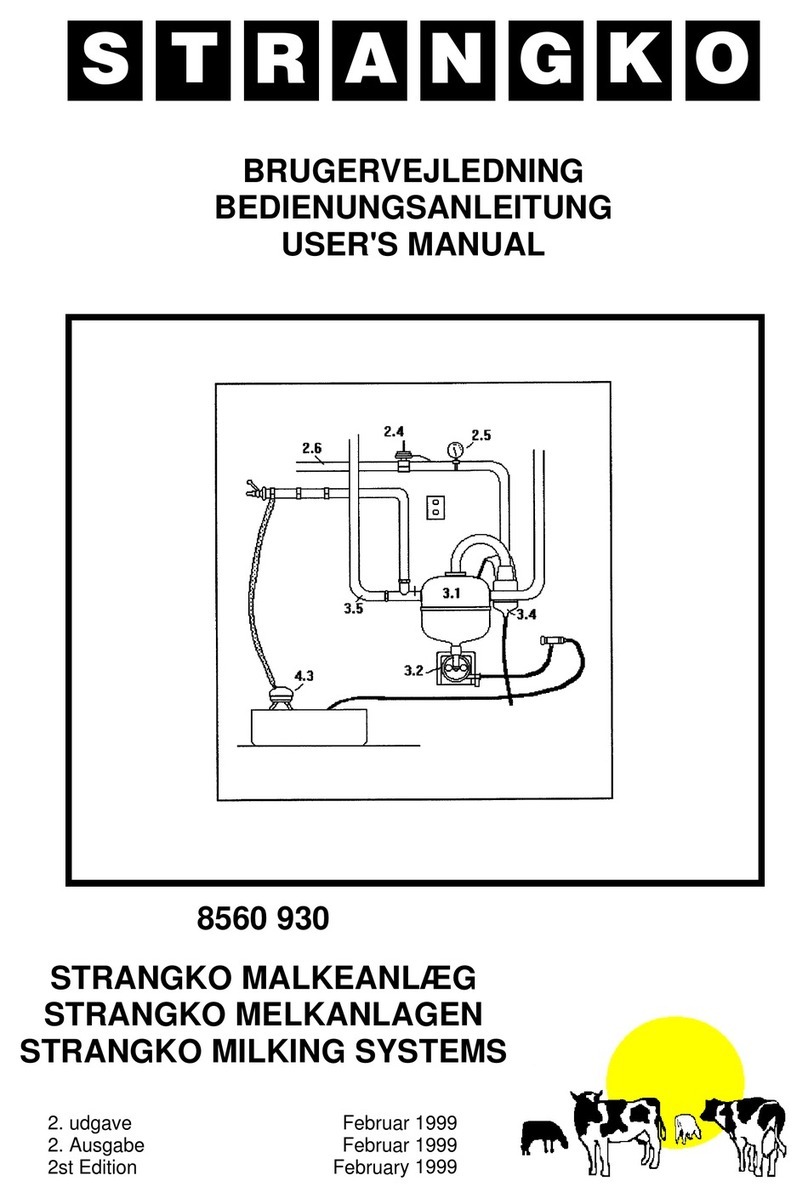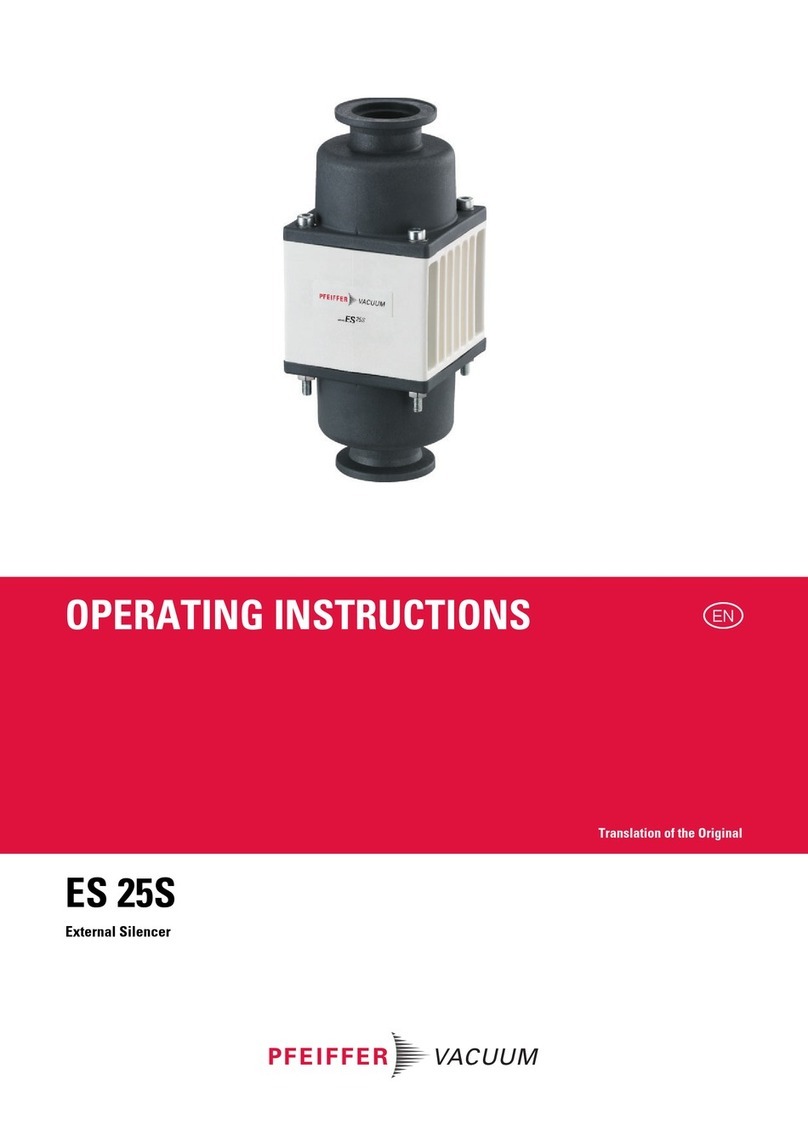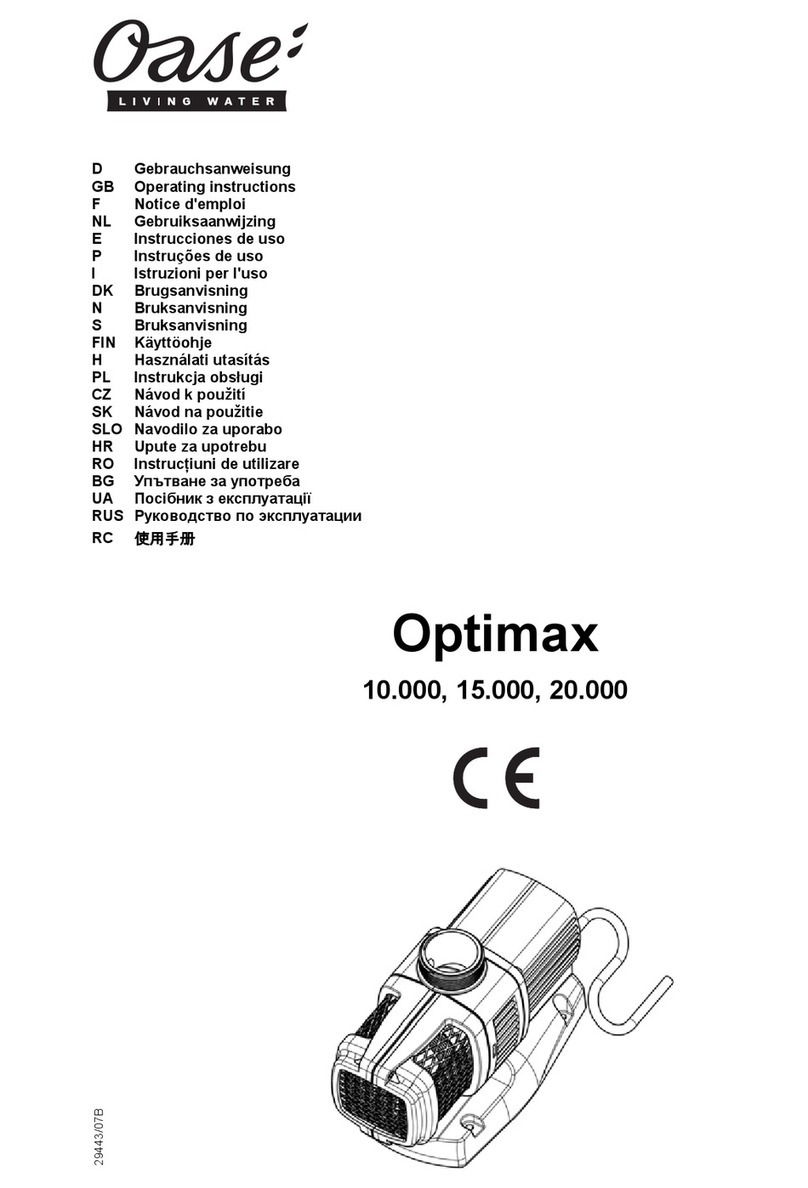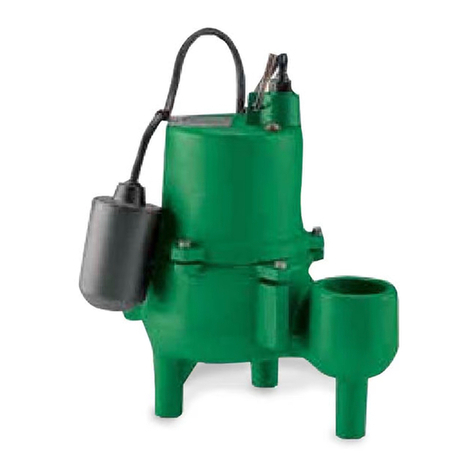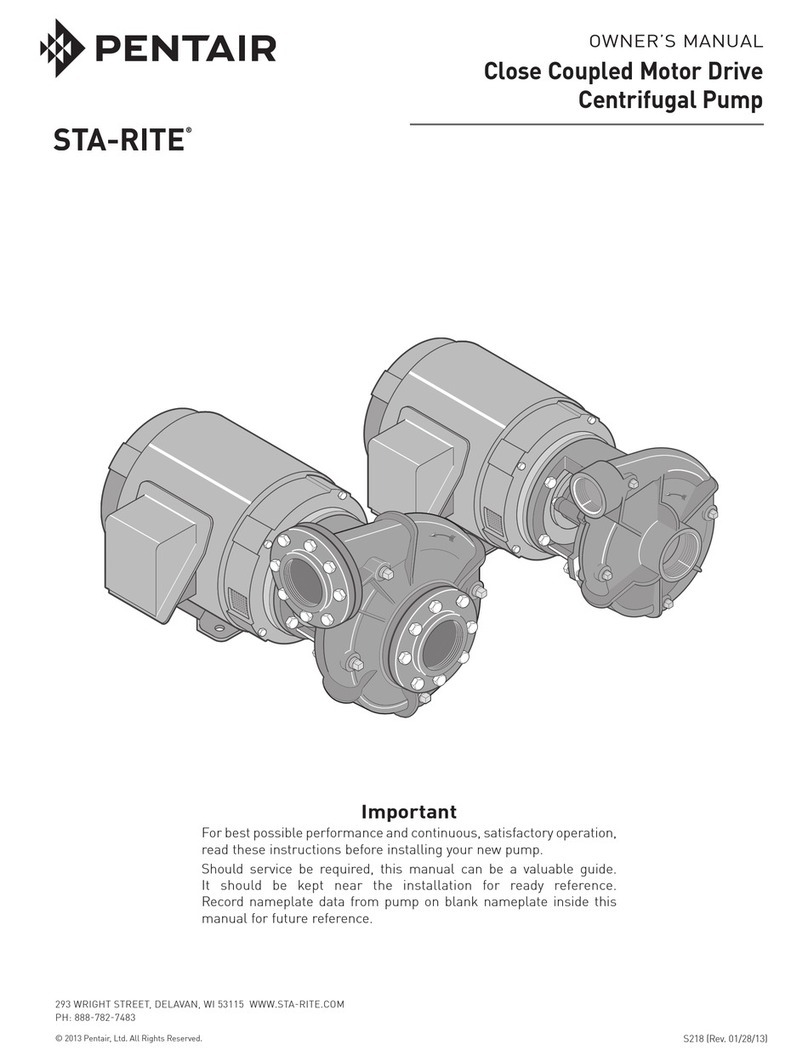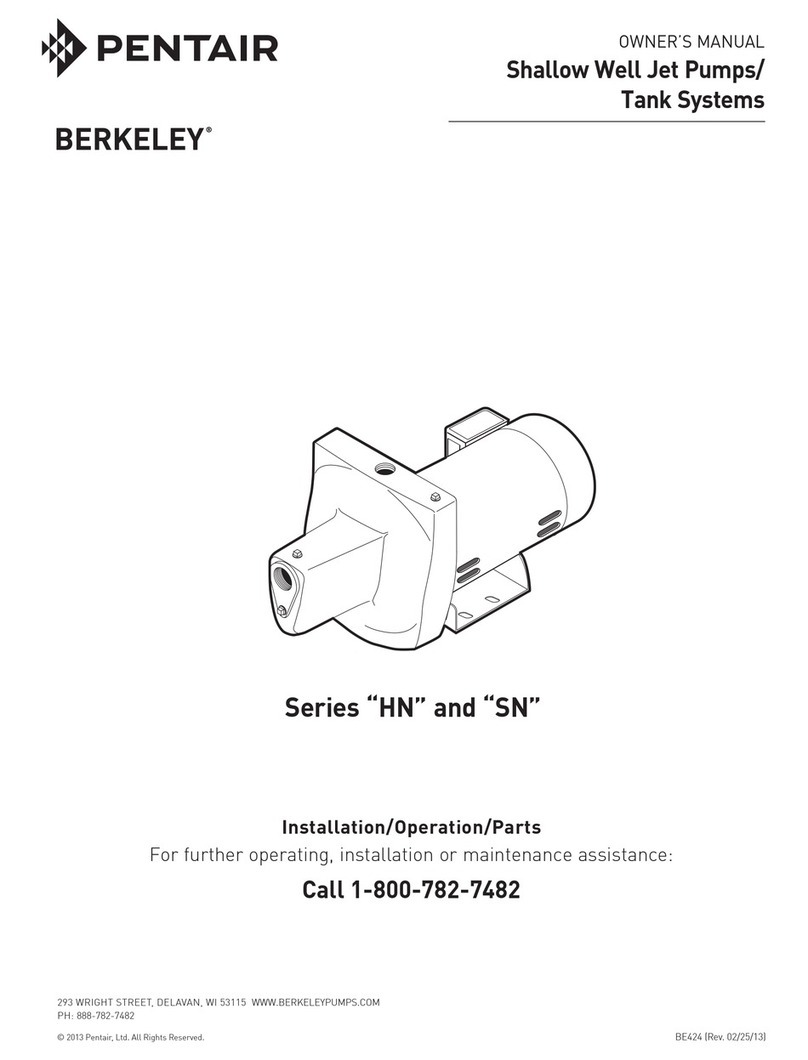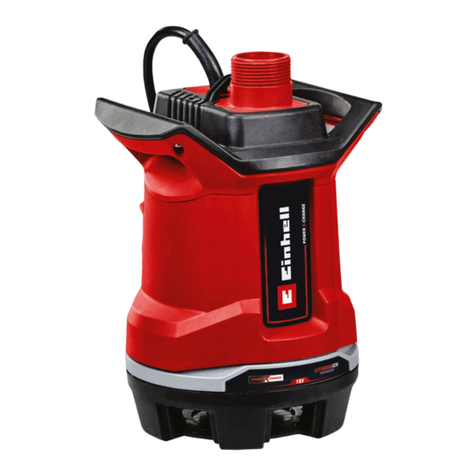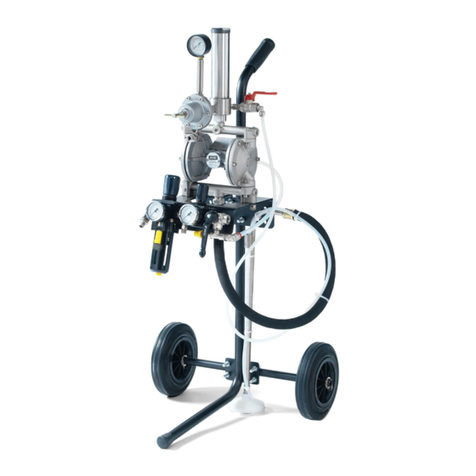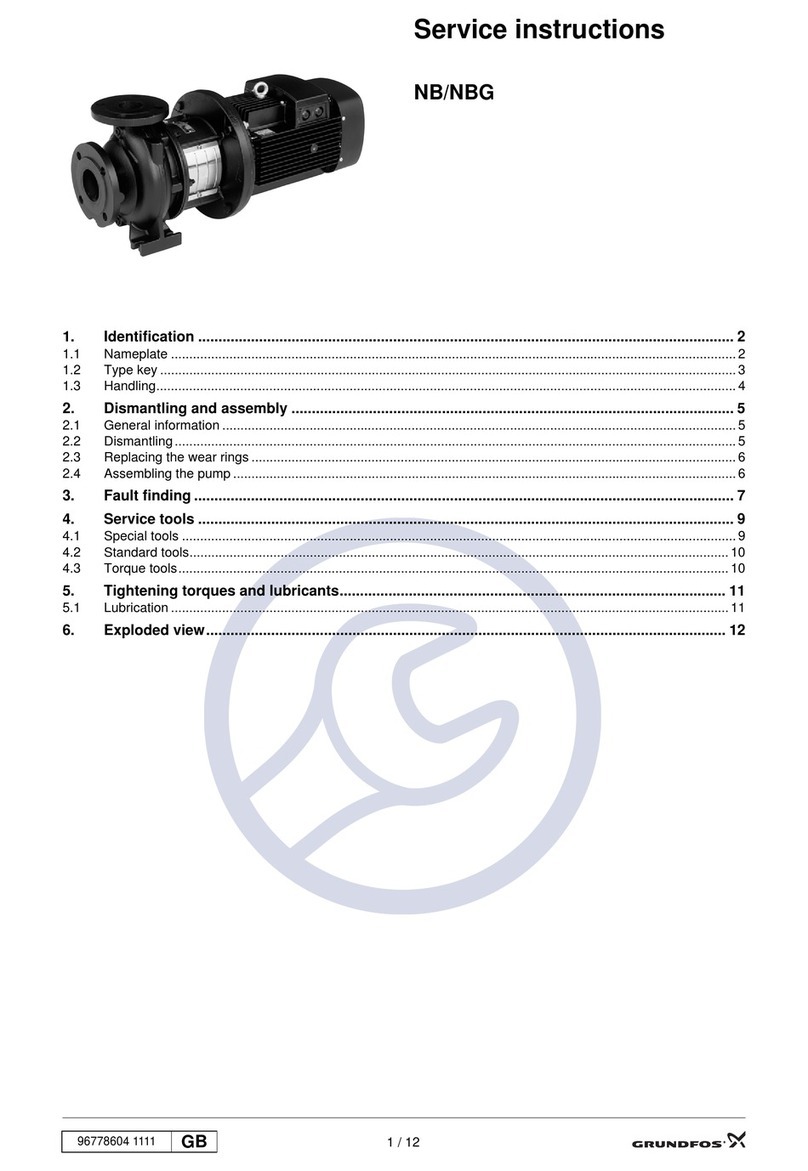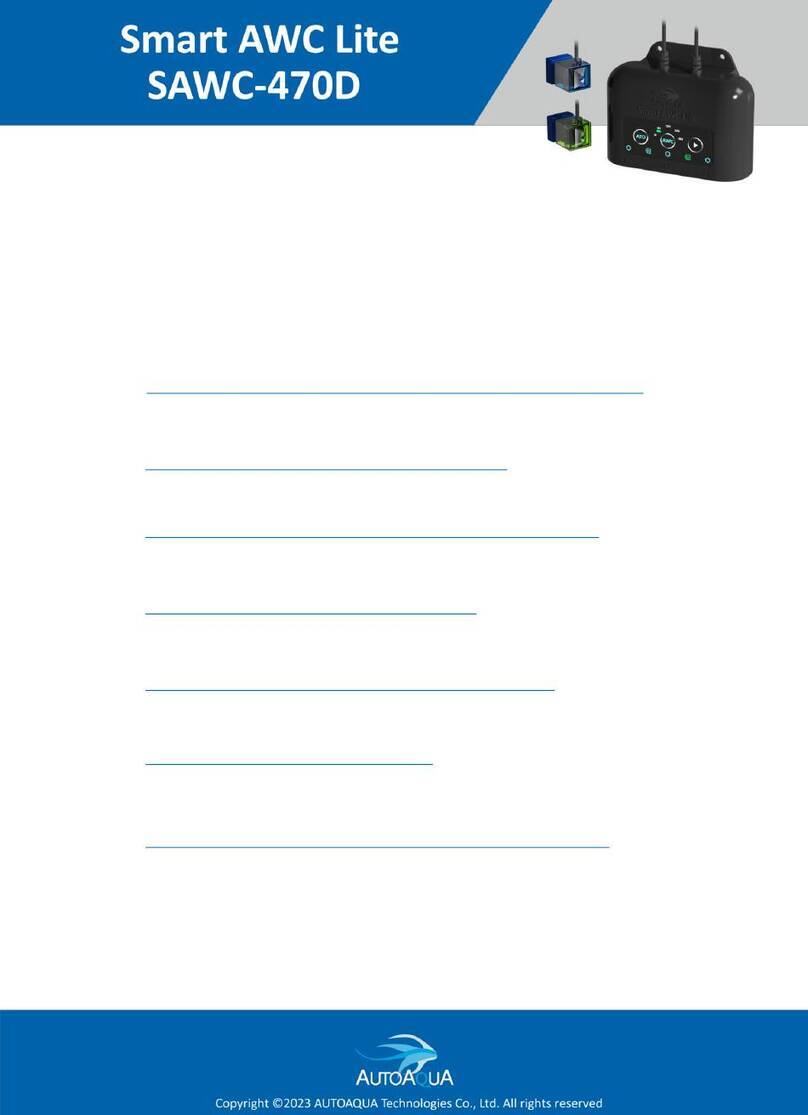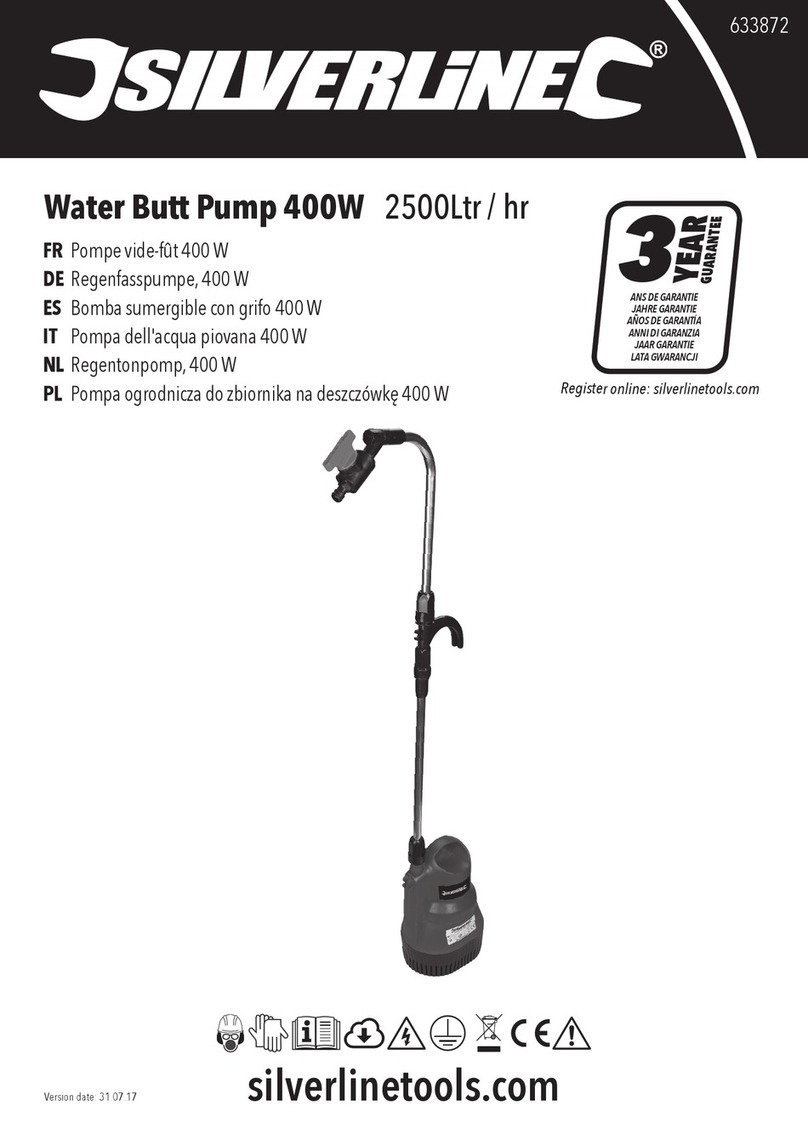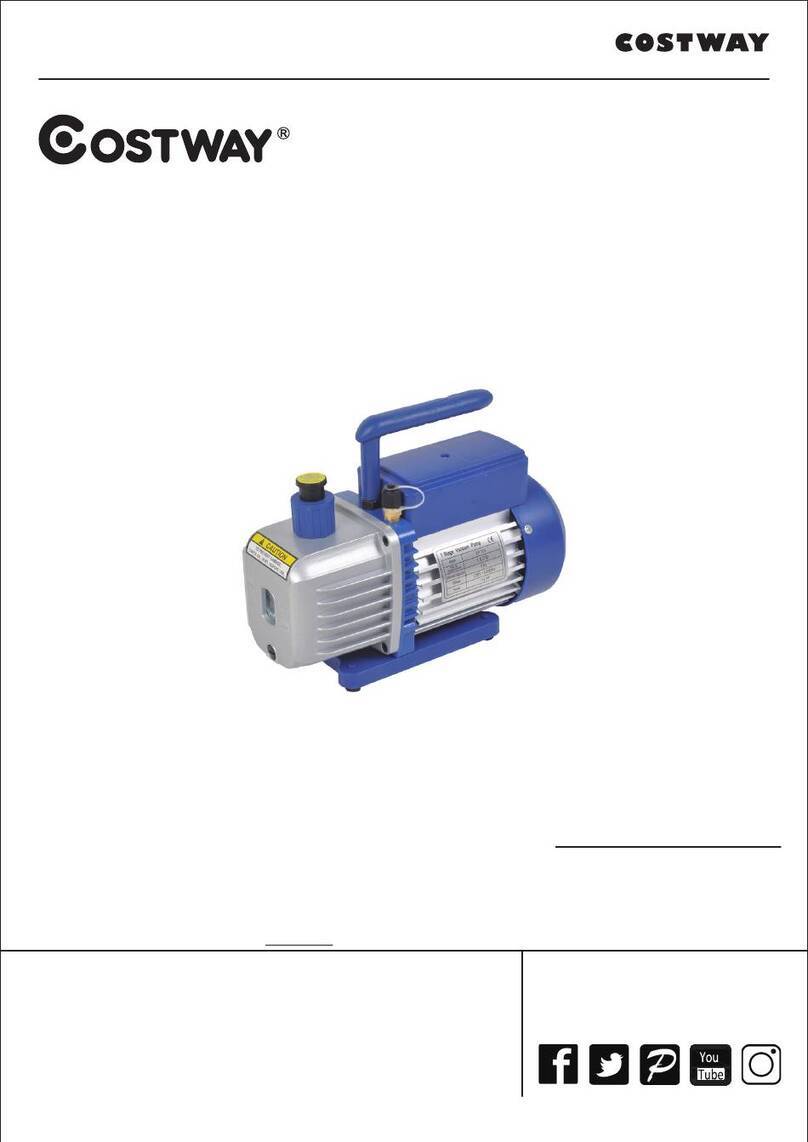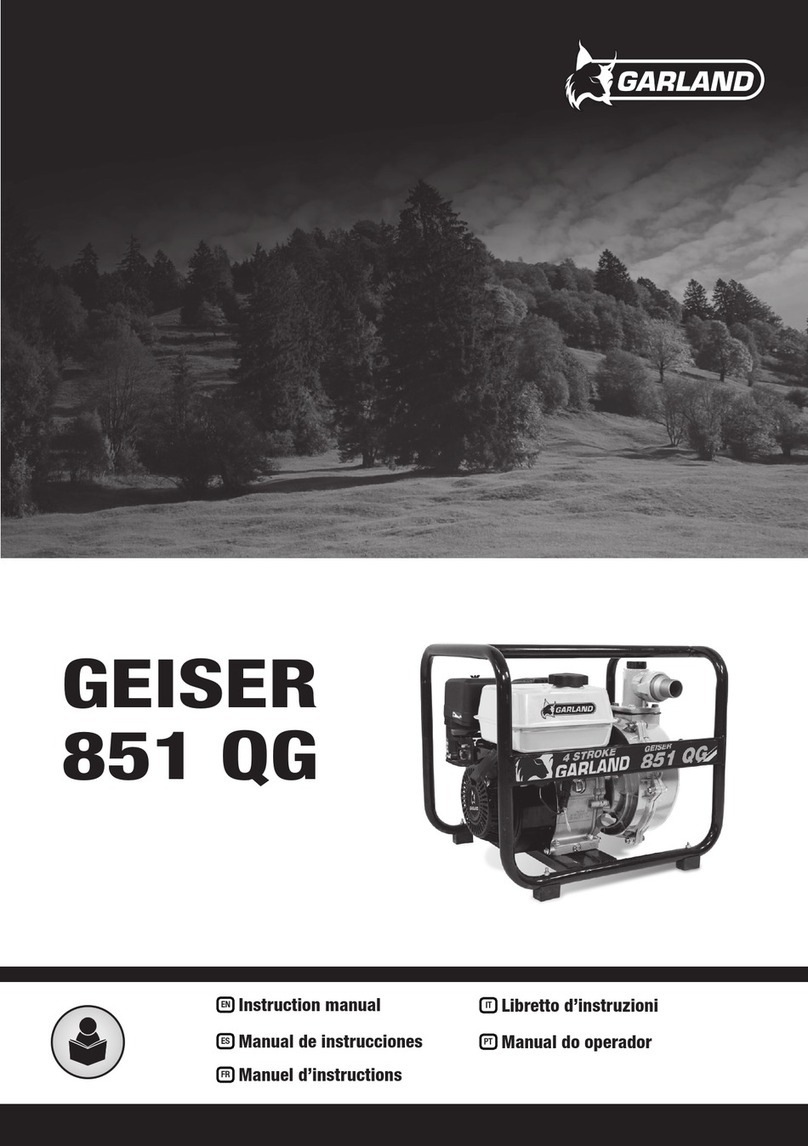
01/07/13
Model 6300-1 Propeller Pumps
Installation, Operation and Maintenance
7
Fairbanks Nijhuis™
Before mounting the driver, see that the packing box gasket is in place on the faced surface of the floor plate. Slip the
packing box assembly and the water slinger (above it) over the top shaft. The packing box may now be mounted onto
the floor plate. The water slinger ring should be adjusted later at approximately 1/4" below the driver.
In starting the pump for the first time, or after repacking the stuffing box, tighten the gland only thumb-tight until after
the pump is in operation. Then tighten gland further with a small wrench, if necessary, until there is only a very slight
trickle of water to keep the packing lubricated. If the gland starts to leak excessively, tighten it promptly. When the
gland is screwed clear down, back it off and add a ring of packing. Give the packing gland grease cup one or two
turns each time the pump is started, or at least twice a day if the pump is operating continuously or automatically.
ADJUSTING PROPELLERS:
FIGURE 6310 PROPELLERS:
The Fig. 6310 pump has a cylindrical bowl seat section. It is designed to operate best with the propeller set halfway
between the extreme upper and lower limits of travel possible with end play at the pump.
To adjust the propeller, run the adjusting nut down, finger-tight on the top shaft. Try turning the motor drive clutch
by hand. If it doesn't turn freely, the propeller is in the extreme low position, resting on the bowl hub. Measure the
length of top shaft projecting above the motor drive clutch. Tighten the adjusting nut down until the propeller is in
the extreme upper position. This will be the point at which the clutch can no longer be turned easily by hand. Again,
measure the length of top shaft projecting above the clutch. Deduct the first measurement from the second. Lower
the propeller one-half the difference between the two measurements.
FIGURE 6360 PROPELLERS:
The Fig. 6360 pump is constructed with an inclined bowl seat. The propeller vanes must run very close to the bowl
seat to obtain best performance from the pump. However, it is injurious to the pump, and usually to the motor, to run
the propellers too low. Greater care must be exercised when adjusting Fig. 6360 propellers than is necessary on
Fig. 6310 propellers.
Run the adjusting nut down on the top shaft and tighten it until the propeller just clears the bowl seat. This point can
be determined by turning the motor drive clutch by hand. When the propeller is contacting the seat of any point, the
"drag" can be readily felt. When the propeller clears at all points, the clutch will turn easily. Locate the point where
the propeller just clears, as accurately as possible. Then raise the propeller approximately 1/16". The adjusting nut
has six equally spaced set screws to lock it in place. It may not be possible to raise the propeller exactly 1/16" and
lock it at that point without tightening the set screw on the top shaft threads. Turn the nut down until the nearest set
screwhole matches the keyway in the shaft and lock it in place. This will raise the propeller slightly more than 1/16"
off the bowl seat.
After the pump has run for five minutes (pumping water), stop it and check the propeller adjustment.
GENERAL MAINTENANCE OF PROPELLER PUMPS:
Fairbanks Nijhuis propeller pumps are of simple, rugged design and require a minimum of adjustment and servicing
in the field. Ordinary good maintenance practice such as keeping the machinery clean and properly oiled is advisable.
It is undesirable to use more oil than the instructions call for. No servicing will be required below the base plate for
normal operation.
When it becomes necessary to pull the pump to replace worn parts, all parts to be reused must be thoroughly cleaned
before reinstalling. At this time the lubricant in the suction bowl bearing should be replaced.
It is always advisable to consult with your local Fairbanks Nijhuis representative concerning the operation
of the pump.
A few precautions should be observed in the system of which the pump is a member:
1. Do not use a valve to throttle the pump. All propeller pumps build up to overload conditions when throttled down
too greatly. Should it be necessary to reduce the quantity of fluid pumped into the line, do so by means of a
bypass. Consult a Fairbanks Nijhuis representative before installing any valves in the pumping system.
2. Do not allow floating objects such as large lumber clippings, rags or similar objects to go through the pump.
When operating in a forebay or sump that is not adequately screened, a strainer should be installed
on the pump.
















